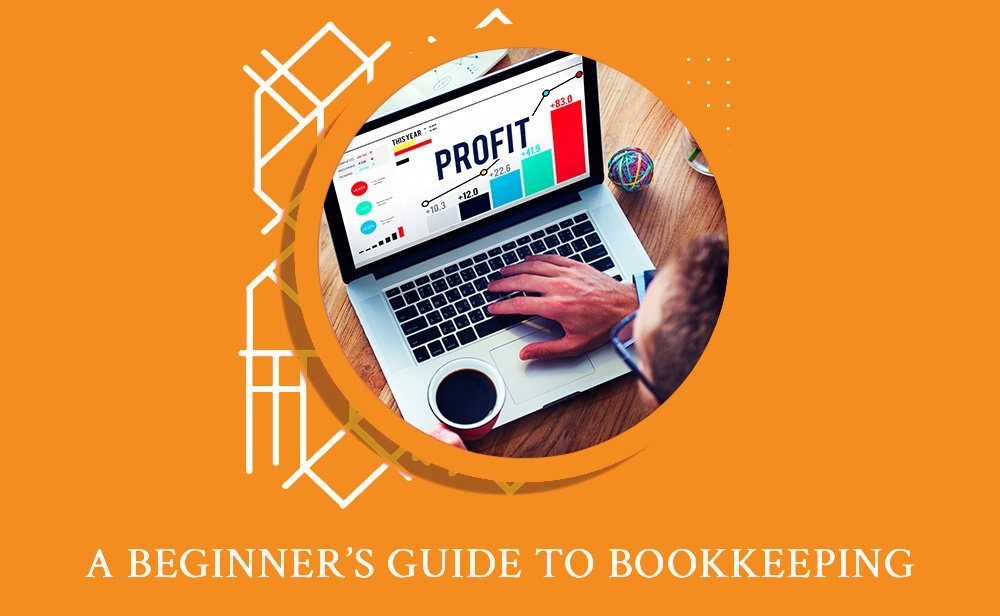A Beginner’s Guide To Bookkeeping

For most business owners, bookkeeping is a pain. It’s confusing, time-consuming, and an utterly miserable experience, even if your business’ books are relatively simple.
At Balance & Foster Inc., we understand how challenging bookkeeping can be and want to help you transform the chaos into order and receipts into reports. More importantly, we would like to help you stop the 3 A.M. sweats about finances, tax filings, and messy records.
So whether your business is just getting started or is still in the early stages, our best advice is to get your books set up professionally from the start! This is one of the most important steps you can take to avoid costly mistakes that could come back to bite you.
To help you with this, we have put together a Beginner’s Guide to bookkeeping. Keep reading to know more.
Understand the bookkeeping process
One of the first decisions you have to make when setting up your bookkeeping system is whether or not to use a cash or accrual accounting system. If you are operating a small, one-person business from home or even a larger consulting practice from a one-person office, you might want to stick with cash accounting. If you are going to offer your customers credit or if you are going to request credit from your suppliers, then you have to use an accrual accounting system.
Be organized
Be very organized, be very well organized!
As a business owner, you should be organized with bookkeeping in order to keep track of your company’s finances. This will allow you to make informed decisions about where to allocate your resources and ensure that your business runs smoothly.
Get a clear picture of your finances
Effective bookkeeping requires an understanding of the firm’s basic accounts. These accounts and their sub-accounts make up the company’s chart of accounts. Assets, liabilities, and equity make up the accounts that compose the company’s balance sheet.
- Assets are what the company owns, such as its inventory and accounts receivables. Assets also include fixed assets which are generally the plant, equipment, and land. If you look at the balance sheet format, you will see the asset accounts listed in the order of their liquidity. Asset accounts start with the cash account since cash is perfectly liquid. After the cash account, there are the inventory, receivables, and fixed assets accounts. Those are tangible assets. You can touch them. Firms also have intangible assets such as customer goodwill that may be listed on the balance sheet.
- Liabilities are what the company owes, like what they owe to their suppliers, bank and business loans, mortgages, and any other debt on the books. The liability accounts on a balance sheet include both current and long-term liabilities. Current liabilities are usually accounts payable and accruals. Accounts payable are usually what the business owes to its suppliers, credit cards, and bank loans. Accruals will consist of taxes owed, including sales tax owed and federal, state, social security, and Medicare tax on the employees, which are generally paid quarterly. Long-term liabilities have a maturity of greater than one year and include items like mortgage loans.
- Equity is the investment a business owner and any other investors have in the firm. The equity accounts include all the claims the owners have against the company. The business owner has an investment, and it may be the only investment in the firm. If the firm has taken on other investors, that is reflected here.
In bookkeeping, you must balance your books at the end of the year. The bookkeeper has to keep careful track of these items and be sure the transactions that deal with assets, liabilities, and equity are recorded correctly and in the right place. There is a key formula you can use to make sure your books always balance. That formula is called the accounting equation:
Assets = Liabilities + Equity
The accounting equation means that everything the business owns (assets) is balanced against claims against the business (liabilities and equity). Liabilities are claims based on what you owe vendors and lenders. Owners of the business have claims against the remaining assets (equity).
Hire a professional
A professional bookkeeper can help keep track of income and expenses, reconcile bank statements, prepare financial statements, and help with tax preparation. A professional bookkeeper can also provide valuable insights and recommendations to help a business owner make informed decisions about their business.
Takeaway
So whether your business is just getting started or is still in the early stages, our best advice is to get your books set up professionally from the start! This is one of the most important steps you can take to avoid costly mistakes that could come back to bite you.
At Balance & Foster Inc., our goal is to exceed your expectations. As the go-to experts in Hamilton, ON, for all bookkeeping, tax, and accounting needs, you can feel confident building your business with us. We offer tax, accounting, trusts and estates, bookkeeping services, and more. Our services are extended to clients across Hamilton, St. Catharines, Niagara Falls, Toronto, Markham, Vaughan, Kitchener, London, and the surrounding areas.
Get in touch with us today!
To learn more about the services we offer, please click here. To get in touch with us, please click here or call us at (905) 523-0444 or email us at info@balanceandfoster.com.